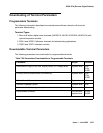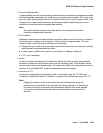
Communication Manager Maintenance-Object Repair Procedures
1926 Maintenance Procedures for Avaya Communication Manager 3.0, Media Gateways and Servers
RDIG-STA (Remote Digital Station)
S8700 | 8710 / S8500
A per-port instance of this MO (RDIG-STA) is used to maintain the circuitry associated with a
port which has been translated as a digital station (or DCP Console). The combo blade circuit
board has the capability of having 24 instances of this type of MO.
Remote Digital Station maintenance software provides maintenance for a port administered as
a digital station on the circuit pack. This strategy covers the in-line errors log, initialization tests,
periodic tests, craft-demanded tests, and alarm resolution and escalation. Each port, translated
as a digital station on a digital line board, is running as a separate MO (RDIG-STA) of this type.
Fault conditions discovered on one MO may or may not indicate faults on other MOs of the
same type.
Maintenance testing for the port circuitry on the combo blade circuit packs is handled by
on-board firmware and media server-controlled tests. Maintenance software queries the
firmware for error and alarm information, status, and test results. Firmware automatically reports
in-line error conditions, which results in media server-controlled testing.
There are instances where the service state of a station is mentioned. The different service
states that apply to a remote digital line station are as follows:
MO Name in
Alarm Log
Alarm
Level
Initial SAT Command to Run Full Name of MO
RDIG-STA MIN test station location l Remote Digital Station
RDIG-STA WRN test station location sh Remote Digital Station
Out-of-Service The port, and thus the station, have been removed from service.
Busyout puts the port in the out-of-service state.
Ready-for-Service The port on the circuit pack has been put into service, but the voice
terminal has not yet established signaling communications with the port.
In-Service The voice terminal has established signaling communications with the
port, and the system is ready to process calls to and from that station. A
terminal in the ready-for-service state will progress to the in-service state
if it is functioning normally. It can also be forced into the in-service state
by going off-hook.


















